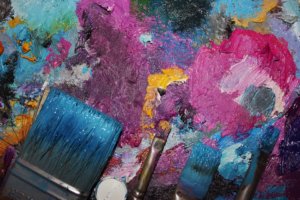The History of Silver
Century’s ago when silversmiths first started working with silver they discovered that it was far too soft to work with and had to be assimilated with other, more resilient, base metals before it could be moulded. It is due to this discovery that from 1300 BC all silver metals had to be tested to show that they contained more than 92.5% silver.
This hallmarking system has survived to present day without much change. It is these hallmarks that provide silver collectors with their most important identification tool. Hallmarks are stamped by the Official Assay Offices, together with the marker’s own mark, so you can identify where, when and who made the pieces of silver. You can also learn to tell if the style of the piece is consistent with the date indicated by its markings. Although this hallmarking system of marking was most rigorously applied in England, most countries have some form of identifying marking system. For example Mexico use numbers that signify the quality of a piece.
Antique Appreciation
An antique is described as being an object which has reached a certain age and has become a witness of a previous era in human society. Antiques are usually objects that show a high degree of craftsmanship and attention to detail and design. In a today’s society an antique is above all an object whose atypical construction and age give it a market value superior to similar objects of recent manufacture. Silver is a valuable commodity amongst those on the antique scene and despite changing fashions, old silver pieces remain collectable.
Antique collecting is becoming more popular amongst society as a whole, where as in the past collecting was thought to be a hobby enjoyed only by those who enjoyed wealth and a certain social standing. More and more people are becoming educated in antiques and are beginning to see pieces of value in their own homes. Television programming such as BBC’s *Cash in the attic*, *Antiques road show* and *Bargain Hunt* have done wonders in educating society about all things antique.
Researching Antique Silver
Determining whether your items of silver are valuable or not is not as hard as it may sound, you could have it professionally appraised or you could take the time to do some research at your local library or on the Internet.
There are a number of facts that make your research easier, particularly the official hallmark and the stamp indicating the craftsman’s name. They immediately disclose the item in which the item was made and by whom.
There are a few key items of information that will make your research easier: what is the marker’s mark, the decade in which the item was crafted and so on. There are many websites dedicated to antique silver online and you could even enter into a web discussion with its members who may be able to offer you some valuable information about your silver collection.
Silver Plating
Silver plated articles also have considerable antiquarian value. Good pieces can have up to 40 microns of pure silver electro-plated onto a base metal, usually copper or nickel. Years of abrasive cleaning may often have worn away some of the silver plating, but this is looked upon as proof of age and such items should not be re-plated or they will lose considerable value. Silver service cutlery is all silver plated, with traditional patterns like Kings or Queens being very collectable.
Whilst silver plated pieces have obviously less value than solid silver, they are often much sort after by collectors.
Silver Collectors
Some silver collectors devote their attention to a specific pattern while others collect a particular maker, era or item. The silver you chose to collect does not need to adhere to any of these specifications * don’t be afraid to mix and match. When purchasing silver, signs of use do not always detract from value and damage may or may not. In fact slight damage on a rare piece will not significantly reduce value, if at all.
Be wary of buying tarnished pieces as it can easily be hiding wear, damage or repair. Ask yourself why someone selling such items has not cleaned them to show them at their best. So inspect tarnished items with particular care.
Having a monogram on an item will often detract from its price. This is much more common on silver plated rather than solid silver pieces. Sometimes attempts have been made to remove monograms, damaging them as well as lowering their value.
Make sure that you are educated enough to be able to spot repairs that have been made to items as well as forgeries that do crop up at less reputable markets or websites.
Caring for your Silver
Looking after antiques is the most important part in owning them. They need to be taken care of properly to ensure that they remain valuable, attractive and collectable. Whether your silver is modern or antique it is very important to take proper care of it as it’s value and beauty are prized. Always maintain your silver with a non-abrasive cleaner. Every time you buff and polish you remove a fine layer.
Over the years such treatment removes hallmarks and eventually removes the silver plated surface. Museums use an electrolytic process which is quite harmless. These are available for domestic use and remove tarnish in seconds.Tarnishing (oxidisation) occurs when silver is exposed to the air. Items that are not for display like cutlery can be kept airtight in a drawer wrapped in a cloth – otherwise they will need cleaning each time you use them.
Storing Silver
When storing silver the best way to keep it safe from harmful sulphur in the air is to seal it in an air tight container. This said it is not always practical to store your pieces in such containers. In cases like this a sachet containing activated charcoal can help to reduce tarnishing significantly.
Activated charcoal is effectively an air scrubber which removes pollutants like sulphur from the air around your silver. It is also a good idea to keep a bag of activated charcoal in your display cases or jewelry box. Charcoal can only absorb a certain amount of sulphur before it becomes ineffective so sachets must be replaced at least once a year.
After prolonged storage, your silver will need to be cleaned, but if stored correctly it will be a far less daunting task. Don’t use ordinary newspaper to wrap the silver or use elastic bands to bind several pieces together. After a while the rubber will bond to the silver as the band deteriorates and rots, leaving a stain, as will newspaper. Instead, use acid-free paper to wrap items and store where it’s not damp.
Appreciating your Silver
To ensure that your items of silver remain in the best possible condition whether they are antique or modern pieces it is imperative that they are cleaned and stored correctly. Silver crafts are valued works of art that should be treasured. Hold on to pieces of silver and treat them well, it will only add to their value in later years.
Submitted by:Sarah MannersCaring for your antiques is the most important part in owning them but this doesn’t need to be as hard as it sounds. The Qwicksilver company http://www.qwicksilver.co.uk have patented a non-abrasive electrolytic cleaning plate that quickly removes tarnish under water in your sink. They also offer advice on proper care of your antique |





